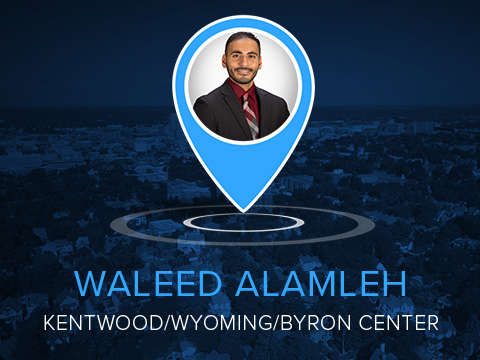PARNELL, Mich. — Rumor has it that St. Patrick banned all snakes from Ireland back in the early 400s. Since then he’s been known as the patron saint of snakes.
Father Tom Cavera said that’s all lore.
“On this app, they say patron against fear of snakes, snakebites, snakes, barbers, hairdressers, barrel makers, blacksmiths, cattle, engineers, excluded people, minors, [and] Ireland,” said Father Cavera while reading from his phone. “I think just in the larger sense he’s the patron of Ireland.”
Today, his name is celebrated with parades, bagpipes, and beer. However, Father Cavera said his legend is so much deeper than that.
“Patrick's story is really kind of fascinating because he wasn’t born in Ireland,” said Father Cavera of St. Patrick’s Parish in Parnell. “He was born and grew up in what we call Britain, and that was the far reach of the Roman Empire back at that time.”
A few facts about St. Patrick. He was:
— Lauren Edwards (@LaurenEdwardsTV) March 17, 2022
☘️ NOT born in Ireland (from what we now call Britain)
☘️ Captured & taken to IRE
☘️ A slave in IRE, tasked with tending 🐑
☘️ Escaped, went back to Europe, became missionary & returned to IRE
Father Cavera explained it all. // @FOX17 pic.twitter.com/xmqpYLSjsh
He said that in the late 300s his village was raided by a group from Ireland, who captured the 16-year-old St. Patrick and enslaved him. In Ireland, he was tasked with tending the sheep in a very mountainous region.
“His master was very cruel and he wasn’t fed well. He wasn’t cared for well,” Father Cavera said. “But in the solitude of being a shepherd and being left out in the wilderness he grew a beautiful rhythm of prayer and deepened a relationship with God.”
Later, St. Patrick escaped Ireland and returned to mainland Europe where he became first a priest and then a bishop. He was then asked to be a missionary and go back to Ireland.
Father Cavera said because of St. Patrick's relationship with God, he accepted.
Consequently, he established Christianity in Ireland, he said.
“One of the amazing things is that Ireland became so Christian, so catholic, that in Europe, when Europe was falling apart in what they called the Dark Ages, the missionaries from Ireland came back to mainland Europe and started planting monasteries,” Father Cavera said. “Whenever a monastery was planted and formed, a village formed around it and civilization kind of built up around it.”
Since then, throughout the centuries, his legend and religion spread wherever the Irish immigrated to, including Parnell, Michigan.
“The immigrants formed this parish community,” Father Cavera explains. “They were Irish.”
Father Cavera said the community was formed back in 1844 and the church was built in the 1870s. The school next door has students whose grandparents went there too.
Of all the lore surrounding St. Patrick, Father Cavera hopes that many will remember him for his courage to return to the place that enslaved him and establish a church.
“It was really a courageous move. That’s what I preached about this morning to the kids,” he said. “That he demonstrated a love for God and prayer, and how that relationship with God and that relationship in prayer allowed him to trust. And when they said, ‘We want you to go back to Ireland,’ he said, ‘OK.’ He was courageous enough to do it. He trusted in God enough to do it and it really changed that country.”














